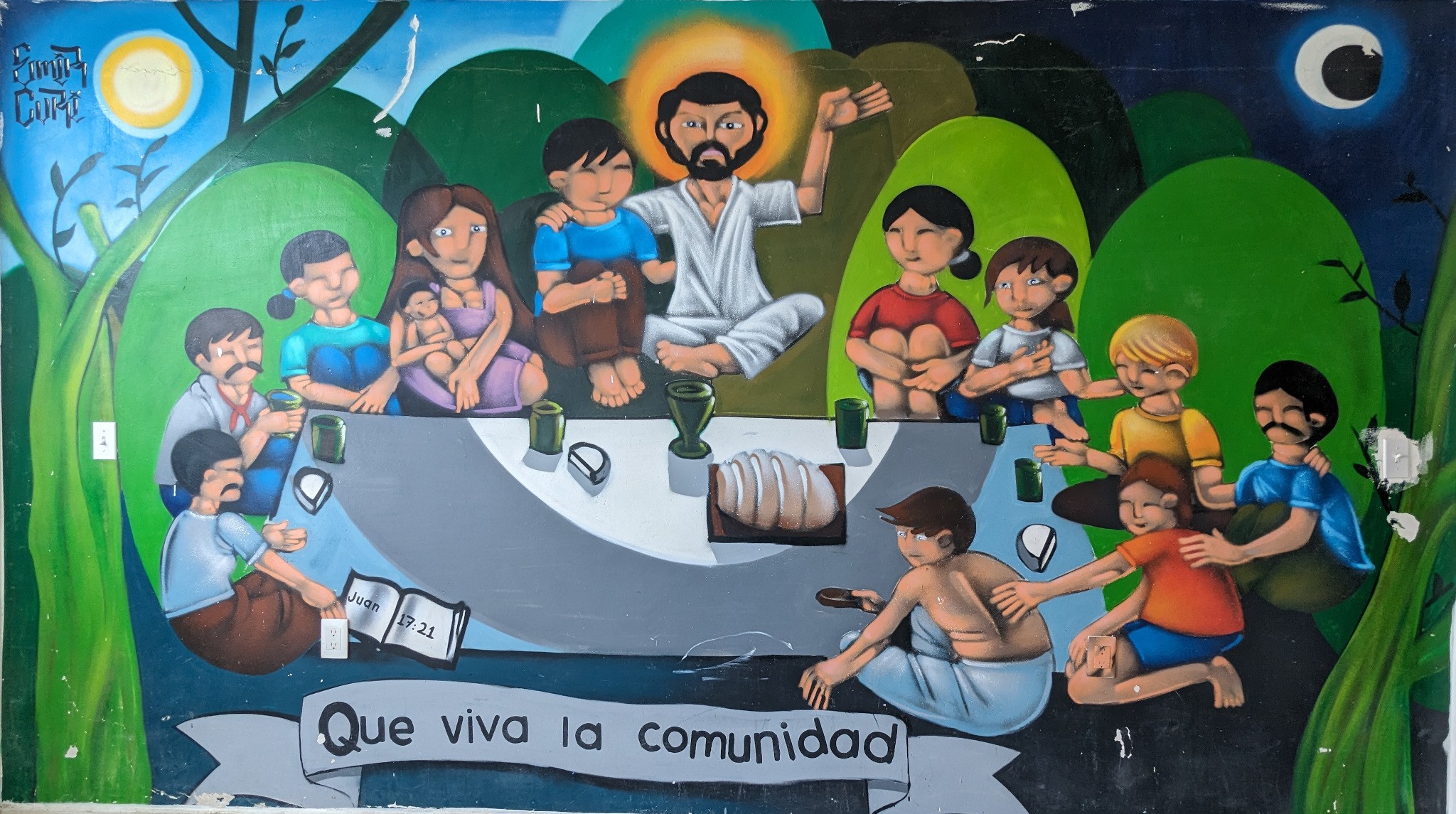Latin America, a region teeming with cultural diversity and youthful vitality, is at a pivotal point. With 42% of its population under the age of 30, this demographic segment offers both substantial opportunities and formidable challenges. The 160 million young individuals aged 15 to 29 represent the largest generation ever in Latin America and the Caribbean.i The future of the region hinges on this generation’s ability to realize their potential. The impact of the Church on young people will depend on how it manages to understand and confront these multifaceted realities and challenges.
Demographic Overview
Latin America stands as not only the most urbanized and violent region globally but also the home of 106 million adolescents aged between 10 and 19.ii Growing up under the shadows of violence, gang culture, teenage pregnancy, and migration, these young people face a critical period that will shape their identities and futures. The challenges and needs of Latin Americans are particularly acute among this younger generation, highlighting both a unique opportunity and an urgent need for effective engagement. Experiencing inequality, injustice, violence, and adversity is a daily reality for the youth in today’s Latin America and the Caribbean.
Domestic Violence
Two-thirds of children and adolescents are subjected to child abuse or violent discipline at home, an alarming trend that deeply scars the social fabric.iii These households, plagued by domestic violence, affect not only the immediate well-being of minors but also significantly heighten the risk of them either perpetrating or falling victim to violence in the future.iv This vicious cycle of domestic violence perpetuates a legacy of trauma and conflict, underscoring the urgent need for effective interventions and protective policies to disrupt this cycle of abuse.
Increase in Youth Violence
It is unsurprising that the region records the highest homicide rate globally, with young people disproportionately affected: 77% of deaths among young men result from violent actsv, making homicide the leading cause of death for adolescents aged 10 to 19.vi Youth violence has reached critical levels, with homicide rates more than five times the global average.vii During the pandemic, there was also a significant rise in gender-based violence. These statistics highlight a severe crisis impacting the youth of Latin America and the Caribbean, jeopardizing their development and future.
Youth Sexual and Reproductive Health
Latin America grapples with significant challenges in the sexual and reproductive health of its youth. The region, with the second-highest rate of teenage pregnancy globally, faces acute issues, particularly among disadvantaged groups. Estimates suggest that between 20% and 35% of 17-year-old adolescents have already been pregnantviii, and one in four girls enters a conjugal union before turning 18.ix Early initiation of sexual activity is a notable characteristic in Latin America and the Caribbean. This issue is further exacerbated by social and cultural barriers that limit access to crucial information and resources for safe and responsible sexual behavior. Challenges include endemic sexual violence, social stigma, inadequate sexual health education, and restricted access to contraceptives. By 2030, it is expected that Latin America and the Caribbean will have the highest rates of teenage pregnancy worldwide.x This situation not only impacts the immediate lives of young people but also poses long-term consequences for their personal development, significantly hindering their access to education and employment opportunities.
Educational Challenges
The COVID-19 pandemic significantly intensified the vulnerability of adolescents and young people in Latin America and the Caribbean, leading to the longest educational disruption seen globally. The region experienced an average of 70 weeks of school closures, far exceeding the global average of 41 weeks, thereby exacerbating the educational inequality gap.xi In 2021, over 60% of poor Latin Americans under 18 years in eight of the region’s twelve countries lacked home connectivity, severely disrupting educational continuity.xii This situation, compounded by a pronounced digital divide, resulted in 71% of secondary school students in the region being unable to comprehend a moderately long text, up from 55% before the pandemic.xiii Currently, less than 50% of students complete their upper secondary education.xiv Additionally, the pandemic led to a sharp decline in youth employment and an increase in child poverty, further obstructing access to education, contributing to a widening inequality gap and perpetuating economic disparities.xv These factors highlight a critical challenge for the region and underscore the urgent need for effective policies and strategies to support the education and development of young people.
Youth Socioeconomic Realities
The economic outlook for young people in Latin America is alarming. With an average youth unemployment rate of 16%, 60% of young individuals are confined to informal jobs, confronting structural barriers in labor markets and facing the grim reality of unfulfilled potential.xvi Approximately 87 million children and adolescents live in poverty, which hampers their educational achievements and limits their access to better employment opportunities.xvii In search of better prospects, many young people leave their rural homes for urban areas, only to find themselves in an individualistic and fragmented society that often leaves them stranded in urban limbo. This challenging reality has prompted a significant number of young people to migrate in hopes of a brighter future. Notably, while globally children comprise 13% of migrants, in Latin America, this figure escalates to one in four, marking the highest proportion worldwide.xviii
Conclusion
The reality of Latin America, worsened by the pandemic, has left deep emotional scars on many young people, who now navigate between suicidal thoughts and a state of constant anxiety, facing unmet physical and mental health needs, as well as psychosomatic illnesses, recognized globally by the WHO. Crime, drug trafficking, and gangs have become attractive structures that draw in and recruit young people, incorporating them into their ranks and providing them with a sense of identity and belonging. This situation is exacerbated by the lack of effective governmental policies and financial support for youth entrepreneurial projects, further limiting their opportunities and future options.
The Role of the Church
Given the significant challenges confronting young people in Latin America, the Church stands at a crucial crossroads: it has the opportunity to profoundly impact the lives of the new generations. Unfortunately, many churches have struggled to respond adequately or to develop the necessary ecosystems to provide effective support. They have not created spaces for reflection, companionship, or refuge where youth facing emotional, labor, and existential uncertainties can find guidance and answers.
This situation underscores the critical need for the Church to earnestly invest in the new generations, establishing ecosystems that foster companionship, reflection, and guidance. Such investments are crucial not only for the future and functionality of the Church itself but also offer a unique chance to positively shape the trajectory of Latin American society by providing alternatives and hope to a young population at a pivotal juncture in their lives.
Below are some innovative strategies and potential approaches that the Church could adopt to positively impact the youth and effect significant and lasting change:
- Foster Community, Belonging, and Discipleship: Creating youth groups and community programs can help address the feeling of isolation that many young people experience. These groups can offer a sense of belonging, a platform for personal and spiritual growth, and a way to drive transformational discipleship among this demographic.
- Promote Grace and Acceptance: The Church can lead by example in promoting inclusivity and acceptance, rather than condemnation and exclusion. This involves actively combating stigma and discrimination based on gender, ethnicity, or socioeconomic status, creating environments where young people feel welcomed and valued.
- Focus on Holistic Development: Programs that address the physical, emotional, spiritual, and intellectual development of young people are crucial. Activities and initiatives that focus on sports, the arts, and cultural events can be effective in engaging young people holistically.
- Mental Health and Emotional Support: Establishing support groups and counseling services within faith communities can provide a refuge for young people dealing with emotional and psychological distress. The Church can become a safe space to discuss issues like anxiety, depression, and the impacts of domestic violence.
- Participation in Social Issues: The Church can play a more active role in social issues, addressing concerns such as teenage pregnancy, drug abuse, and youth violence. By partnering with NGOs and government agencies, the Church can work on implementing initiatives that benefit young people and prevent self-destructive behaviors.
- Address Economic and Educational Barriers: The Church can initiate or support vocational training programs and educational initiatives. These could focus on closing the digital gap, providing functional literacy programs, offering career guidance, and vocational training to help integrate young people into the formal economy.
- Leverage Technology for Outreach: Recognizing the digital aptitude of younger generations, the Church should embrace technology for outreach and engagement. This could include online forums, social media platforms, and digital resources tailored to the interests and needs of young people.
- Empower Youth Leadership: Encouraging young people to take on leadership roles within the Church can foster a sense of ownership and relevance. This approach not only empowers young people but also ensures that Church activities resonate with their realities and aspirations.
- Collaboration with Educational Institutions: Building partnerships with schools and universities can enhance the Church’s impact. These collaborations could involve scholarship programs, mentoring, and joint community service projects.
- Advocate for Changes in Youth Policies: The Church should not shy away from advocating for changes in policies that directly affect young people, such as improved educational systems, prevention of youth violence, employment and entrepreneurship opportunities, and access to medical, sexual-reproductive, and mental health care.
Conclusion
The Church in Latin America stands at a critical crossroads, facing a generation of young people full of potential yet beset by numerous challenges. By forging new pathways to engage and influence this demographic, the Church has the opportunity to play a pivotal role in shaping a more inclusive, equitable, and hopeful future. The urgency is clear, and the time to act is now, to ensure that the young people of Latin America find in the Church a steadfast ally on their path to a brighter future.
Footnotes
i Comisión Económica para América Latina y el Caribe (CEPAL), en su publicación “América Latina y el Caribe: Estimaciones y proyecciones de población 2023”
ii https://www.unicef.org/lac/desarrollo-y-participaci%C3%B3n-de-las-y-los-adolescentes#:~:text=En%20Am%C3%A9rica%20Latina%20y%20el,emocionales%20decisivas%20para%20su%20desarrollo
iii https://blogs.iadb.org/seguridad-ciudadana/en/how-to-prevent-child-abuse-to-eradicate-violence-in-latin-america-and-the-caribbean/#:~:text=Two%20out%20of%20every%20three,link%20to%20other%20delinquent%20behaviors
iv https://data.unicef.org/resources/a-statistical-profile-of-violence-against-children-in-latin-america-and-the-caribbean/
v https://iyfglobal.org/sites/default/files/2022-11/IYF%20in%20LAC%20Fact%20Sheet-ENG-22.pdf
vi https://data.unicef.org/resources/a-statistical-profile-of-violence-against-children-in-latin-america-and-the-caribbean/
vii https://www.unicef.org/lac/en/adolescent-development-and-participation
viii https://www.youthpolicy.org/mappings/regionalyouthscenes/latinamerica/facts/
ix https://www.unicef.org/lac/en/adolescent-development-and-participation
x https://www.thelancet.com/journals/lanchi/article/PIIS2352-4642(22)00282-6/fulltext
xi https://www.cepal.org/en/notes/pandemic-opportunity-transform-education-latin-america-and-caribbean
xii https://www.cepal.org/es/comunicados/tasas-pobreza-america-latina-se-mantienen-2022-encima-niveles-prepandemia-alerta-la
xiii https://www.vaticannews.va/en/world/news/2021-03/unicef-education-latin-america-carribean-children-coronavirus.html
xiv https://r4d.org/projects/reducing-secondary-school-dropouts-latin-america-caribbean-policy-lessons-recommendations/
xv https://www.worldbank.org/en/news/press-release/2023/02/16/durante-la-pandemia-america-latina-y-el-caribe-experimento-una-fuerte-caida-del-empleo-juvenil-nuevo-informe-global
xvi https://blogs.worldbank.org/latinamerica/opportunities-latin-america-caribbean-youth-unemployment
xvii https://www.france24.com/es/am%C3%A9rica-latina/20230401-unicef-16-millones-de-ni%C3%B1os-m%C3%A1s-quedaron-en-la-pobreza-en-am%C3%A9rica-latina-tras-la-pandemia
xviii https://www.unicefusa.org/stories/record-numbers-child-migrants-latin-america-and-caribbean-great-risk#:~:text=Around%20the%20world%2C%20children%20make,who%20have%20been%20forcibly%20displaced.



